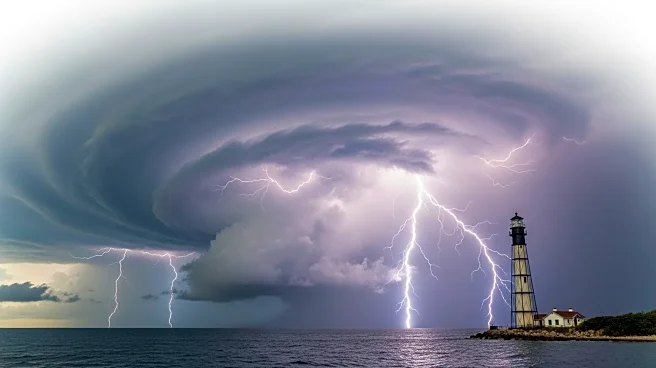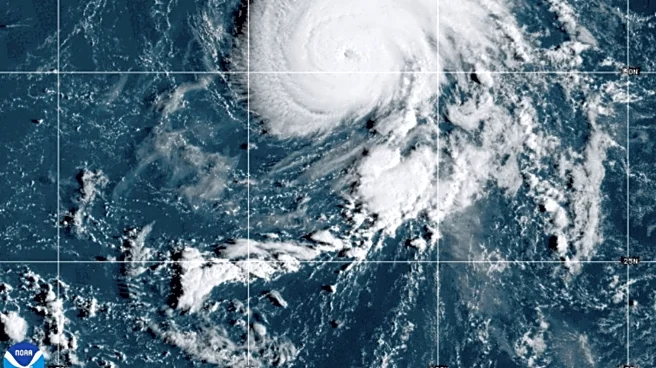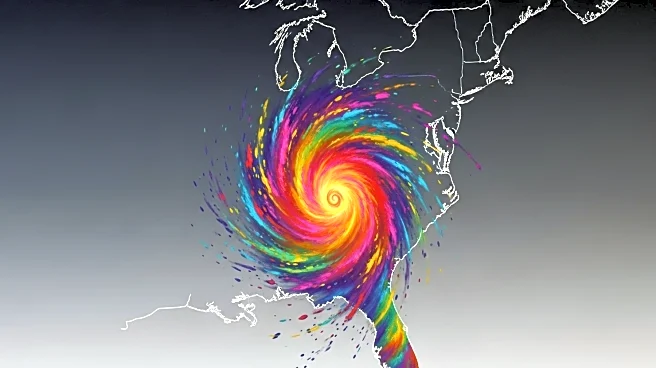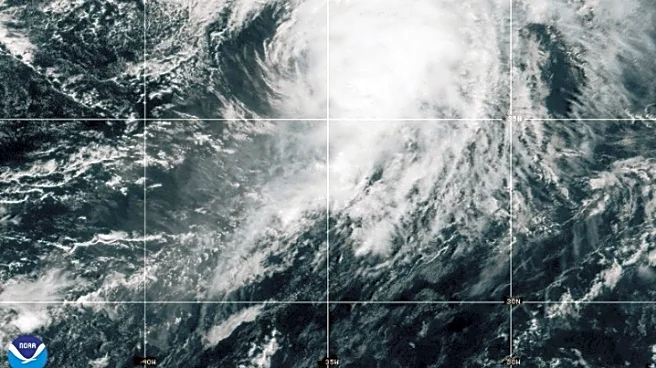What is the story about?
What's Happening?
Hurricane Humberto has intensified into a Category 4 storm with maximum sustained winds of 145 mph, according to the National Hurricane Center. The hurricane is expected to remain a major storm for several days, with its path predicted to pass between the U.S. East Coast and Bermuda. Meanwhile, a disturbance near the Bahamas has developed into Tropical Depression Nine, which is forecasted to become a tropical storm and possibly reach hurricane strength by early next week. The depression is currently impacting the Bahamas, Cuba, and Jamaica with heavy rainfall, flash flooding, and potential mudslides.
Why It's Important?
The strengthening of Hurricane Humberto and the development of Tropical Depression Nine pose significant threats to regions in the Atlantic and the southeastern U.S. coast. Humberto's powerful winds and swells are expected to create life-threatening surf and rip currents along the U.S. East Coast. The potential for Tropical Depression Nine to become a hurricane raises concerns for storm surge and wind impacts in the southeast U.S. The situation underscores the importance of preparedness and monitoring for residents in affected areas, as the storms could lead to significant disruptions and damage.
What's Next?
South Carolina Governor Henry McMaster has issued an emergency declaration, urging residents to prepare for potential impacts. The National Hurricane Center advises monitoring the progress of both storms, as changes in their paths and intensities could alter the severity of impacts. Emergency services and state departments are preparing equipment and resources to respond to potential flooding and damage. The forecast track of Humberto and the development of Tropical Depression Nine will be closely watched for any changes that could affect the U.S. coast.
Beyond the Headlines
The interaction between Hurricane Humberto and Tropical Depression Nine could lead to complex weather patterns, highlighting the challenges of forecasting in such scenarios. The potential for the Fujiwhara effect, where adjacent cyclones rotate around each other, adds uncertainty to predictions. This situation emphasizes the need for advanced meteorological models and real-time data analysis to improve accuracy and response strategies, ensuring effective preparedness and mitigation efforts.
AI Generated Content
Do you find this article useful?















